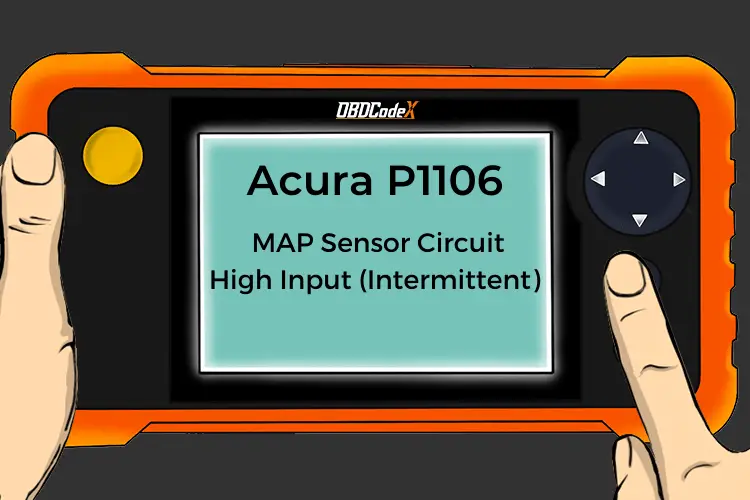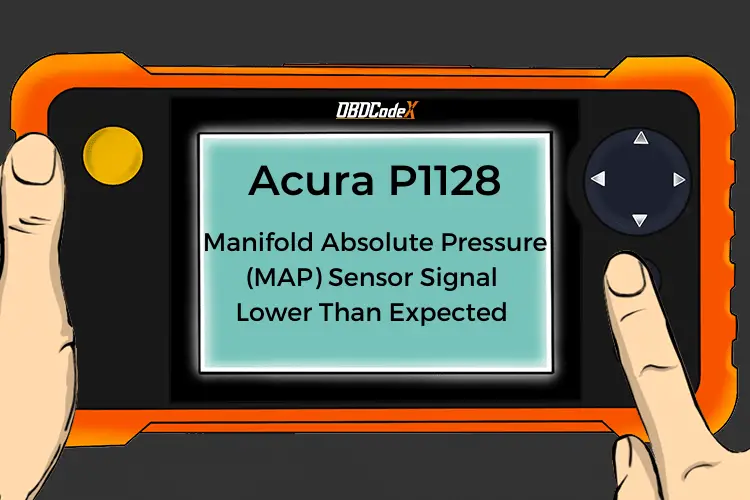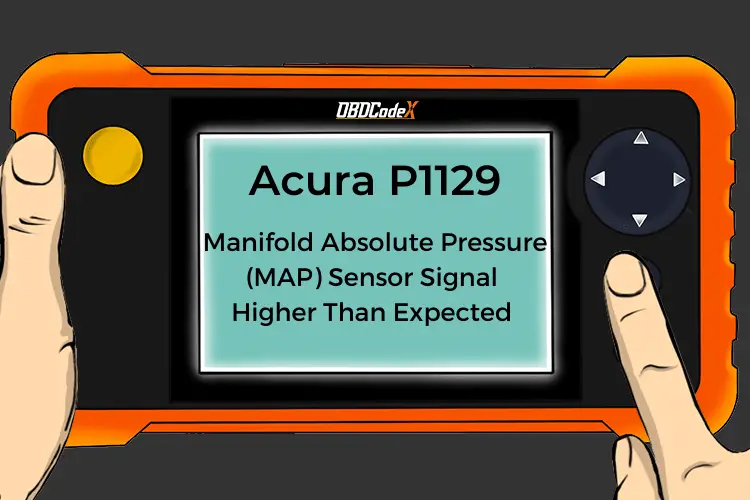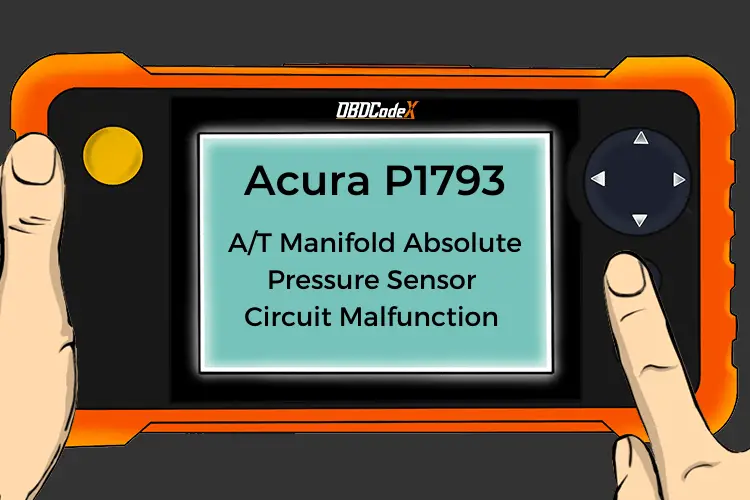P023E: Manifold Absolute Pressure - Turbocharger/Supercharger Boost Sensor B Correlation
Is your scanner showing P023E?
No worries. We'll show you what it means and how to deal with it.
P023E: Manifold Absolute Pressure - Turbocharger/Supercharger Boost Sensor B Correlation
OVERVIEWWhat Does The P023E Code Mean?
If your OBD-II equipped vehicle has stored a code P023E, it means that the powertrain control module (PCM) has detected a discrepancy in the correlating signals between the manifold absolute pressure (MAP) sensor and the turbocharger/supercharger boost sensor which has been designated “B”.
The “B” denotes a specific boost sensor in a system which may use multiple boost sensors in different locations. Consult a reliable vehicle information source to determine precisely which sensor the B references (for the vehicle in question).
This code is applicable only to vehicles that are equipped with forced air induction devices Forced air induction devices include turbochargers and superchargers.
The MAP sensor provides the PCM with a voltage signal that reflects air density or pressure in the intake manifold. The voltage signal is received (by the PCM) as either kilopascal (kPa) units or inches of mercury (Hg).
In some vehicle applications, MAP is substituted for barometric pressure and measured in similar increments.
The turbocharger/supercharger boost pressure sensor (designated B) will likely be of a similar design to the MAP sensor. It monitors air density (boost pressure) inside the turbocharger/supercharger intake pipe and provides the PCM with an appropriate voltage signal.
A code P023E will be stored, and a malfunction indicator lamp (MIL) may be illuminated, if the PCM detects voltage signals between the MAP sensor and the turbocharger/supercharger boost sensor B which differ by more than a programmed degree. Multiple ignition cycles (with a failure) may be required for MIL illumination.
What Are The Symptoms Of The P023E Code?
Symptoms of a P023E trouble code may include:
- Decreased engine performance
- Excessive rich or lean exhaust
- Delayed engine start-up (especially when cold)
- Diminished fuel efficiency
What Are The Potential Causes Of The P023E Code?
Causes for this P023E trouble code may include:
- Defective MAP/ turbocharger/supercharger boost sensor B
- Open or shorted MAP/ turbocharger/supercharger boost sensor B wiring or connector
- Engine failure (insufficient vacuum production)
- Restricted intercooler
- PCM or PCM programming error
How Serious Is This P023E Code?
Overall engine performance and fuel efficiency may be adversely affected by the conditions which contribute to a code P023E. It should be categorized as severe.
How Can You Fix The P023E Code?
I would first gain access to diagnostic scanner, a digital volt/ohmmeter (DVOM), a manual vacuum pressure gauge, and a reliable vehicle information source before attempting to diagnose a code P023E.
Diagnosing any MAP sensor related code should include making sure that the engine is making sufficient vacuum. This may be done using the vacuum pressure gauge.
A visual inspection of all MAP/ turbocharger/supercharger boost sensor system wiring and connectors is in order if there are no intercooler obstructions and the air filter is relatively clean. Make repairs as required. Next, I would connect the scanner to the vehicle diagnostic port and retrieve all stored codes and freeze frame data.
Freeze frame data could be best described as a snap shot of the exact circumstances which were occurring at the time of the malfunction which led to the stored code P023E. I like to write this information down as it may be helpful as the diagnosis proceeds.
Now, clear the codes and test-drive the vehicle to see if the code is reset.
Case #1
If it is:
- Test the individual MAP/ turbocharger/supercharger boost pressure sensors using the DVOM and your vehicle information source
- Place the DVOM on the ohms setting and test the sensors while they are unplugged
- Consult your vehicle information source for component testing specifications
- MAP/ turbocharger/supercharger boost sensors that fail to comply with the manufacturer’s specifications must be replaced
Case #2
If the sensors all comply with manufacturer’s specifications:
- Test for reference voltage (typically 5-volts) and a ground at sensor connectors
- Use the DVOM and connect the positive test lead to the reference voltage pin of the sensor connector with the negative test lead connected to the ground pin of the connector
Case #3
If you find reference voltage and a ground:
- Reconnect the sensor and test the sensor signal circuit with the engine running
- Follow the temperature to voltage chart found within the vehicle information source to determine if the respective sensors are functioning properly
- Sensors which fail to reflect the degree of voltage (according to manifold absolute pressure and turbocharger/supercharger boost pressure) specified by the manufacturer, must be replaced
Case #4
If the sensor signal circuit reflects the correct degree of voltage:
- Test the signal circuit (for the sensor in question) at the PCM connector. If there is a sensor signal at the sensor connector and none at the PCM connector, there is an open circuit between the two components
- Test individual system circuits using the DVOM. Disconnect the PCM (and all related controllers) and follow the diagnostic flow chart or connector pin diagrams to test individual circuit resistance and/or continuity
Suspect PCM failure or a PCM programing error if all MAP/ turbocharger/supercharger boost pressure sensors and circuits are within specifications.
- Check technical service bulletins (TSB) for help with your diagnosis
- The turbocharger/supercharger boost sensor is often left unplugged after air filter replacement and other related maintenance
Recommended Parts
Below are some recommended auto parts to help you address the trouble code affecting your vehicle and get it running smoothly again:
>>> MAP Sensor
>>> Intercooler Parts
>>> ECU
>>> INNOVA 5210
>>> KAIWEETS Digital Multimeter
Note: During the purchasing process, please check carefully whether the part you want to buy fits your car!
Reference Sources
P023E: MAP – Turbo/SC Boost Sensor B Correlation, OBD-Codes.




